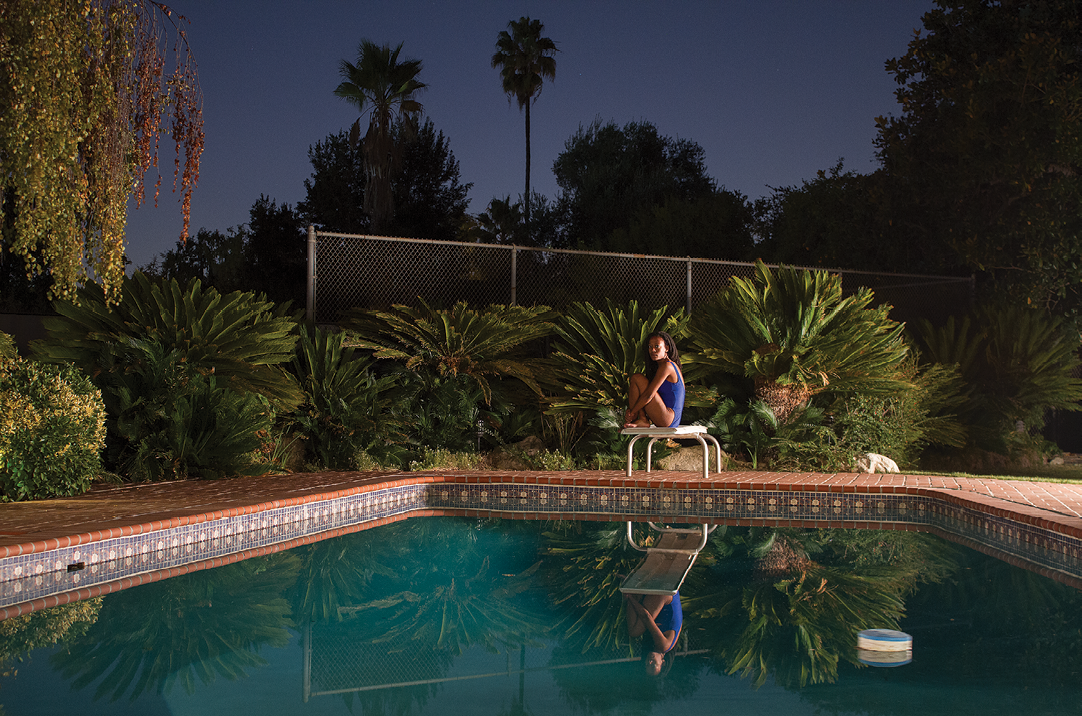The term “Valley Girl” was introduced to popular culture in the early 1980s via a record by Frank Zappa and a film starring Nicolas Cage. It referred to young women from the San Fernando Valley who were portrayed as “ditzy,” “airheaded,” and committed to conspicuous consumption. Their favored social site was the shopping mall, their main activity was gossip.
That was over 30 years ago and by now most of us realize that stereotypes about women—from “Dumb Blonde” to “Bimbo” to “Bitch”—are misogynist labels that oppress the female gender. In an exhibition that effectively deconstructs mass media depictions of “Valley Girls,” curator Erin Stone has assembled an impressive group of artists who were born or educated in the Valley.In artworks that range from traditional paintings and photographs to installations using everything from cosmetics to collapsed bouncy castles, the artists engage a remarkable variety of identities and aesthetic practices.
Perhaps the most iconic artwork in the exhibition is the series of black-and-white photographs of Judy Baca dressed as a “Pachuca,” that is, as a streetwise Chicana with lots of teased, dyed hair, dark red lips and “raccoon eyes.” Baca remembers Pachucas as women who were both powerful and dangerous; as such, they countered the dominant “Valley Girl” narrative. In the series of portraits, Baca clowns for the photographer (her friend Donna Deitch), making faces and blowing clouds of cigarette smoke.

Janna Ireland, l: “The Swimming Pool” (2011), r: “Pool Water” (2012), special edition digital c-print
Monica Sandoval’s contribution is also photographic: a large portrait of the artist lying in a fenced backyard on a blanket of cut flowers. Her hair is dark and she wears a black bathing suit that contrasts harshly with her pale skin. It is a portrait that resists both the traditional focus on the subject’s face as well as the California preference for slender, athletic bodies.
Erika Ostrander’s contribution also deals with the body, but in a disturbingly different way. Ostrander fills the corner of one gallery space with a spinning wheel flanked by piles of human hair. Adjacent is a densely braided Rapunzel-like tower of hair that dwarfs the viewer and challenges the traditional female obsession with her appearance, specifically, her coiffure. Ostrander’s installation takes the term “Bad Hair Day” to a creepy, surreal, yet fascinating dimension.
Not all of the Valley Girl artists create figurative or representational works. Robin Mitchell presents a large abstract painting that appears dynamic and light-filled, in spite of being simple concentric circles crossed by petal-like rays of pigment. Mitchell’s work is almost psychedelic. Clearly, the Valley is big enough and complex enough to defy the limited thought of any stereotype. And Valley Girls in particular are capable of smart, informed and widely ranging cultural production.


